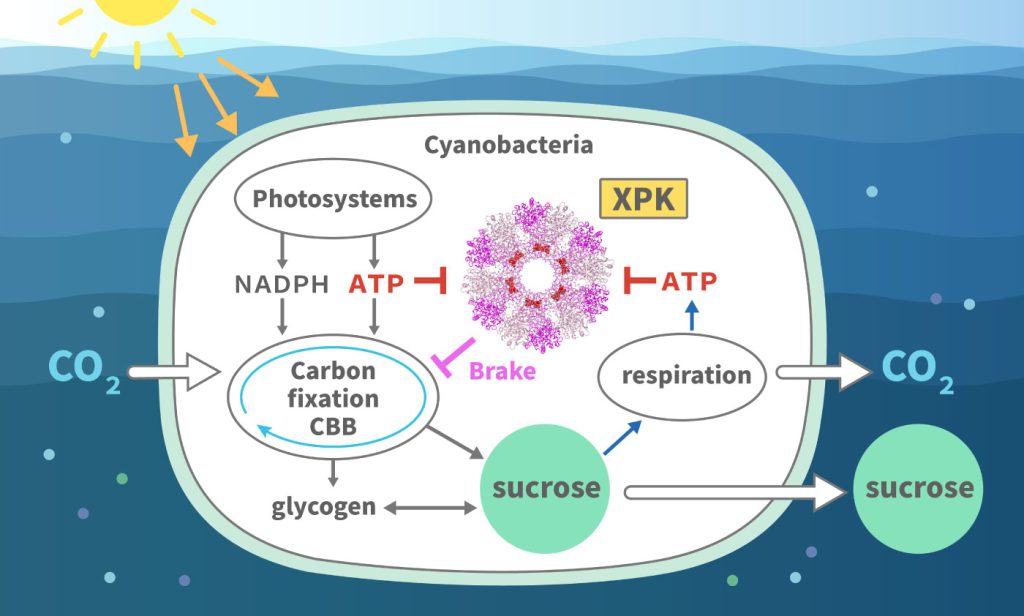Human use of fossil fuels results in ~36 billion tons of carbon dioxide being released annually, severely impacting the carbon balance on earth. A team led by Academia Sinica President James C. Liao and Professor Ming-Daw Tsai has discovered a new way to increase carbon fixation, the process by which CO2 is absorbed, by cyanobacteria (so called blue-green algae). The team’s findings, published in the journal Nature Metabolism in June 2023, provide a new opportunity to mitigate carbon imbalance in nature.
The regulation of carbon fixation in plants and photosynthetic bacteria has been extensively studied. Nevertheless, the team uncovered new functions of a key cyanobacterial metabolic enzyme, phosphoketolase (XPK), which have a significant impact on the ability of the organism to fix carbon. First, the team discovered that XPK can instantly stop the carbon fixation cycle, and in so doing, act as a brake. During rapid light–dark transitions, the energy (ATP) level inside the cell drops significantly. Concurrently, carbon fixation cycle stops within seconds to avoid a futile (energy wasting) process between carbon fixation and respiration.

Increasing the Carbon Fixation Rate by 60% by Rapid Sugar Production in Cyanobacteria
Second, the team discovered that when XPK is deleted from cyanobacteria, the rate of carbon fixation increases by 60%. President Liao explained: “This result, for cyanobacteria, may be only an incremental carbon fixation, which does not significantly influence the cell function. However, it is an opportunity for us to help the carbon balance on earth.” The team also unexpectedly discovered deleting XPK can convert fixed carbon dioxide into sucrose, which is then excreted. This discovery can serve as the foundation to develop strategies for fast sugar production technology.
To understand the mechanism behind the braking system, the team used cryogenic electron microscopy to obtain the three-dimensional structure of XPK. The structures revealed that the enzyme’s braking function is associated with ATP, the molecule reflecting the intracellular energy level. XPK function is deactivated while ATP binds to the enzyme, via a previously unknown mechanism. A drop in the ATP level can cause ATP dissociation in milliseconds and activate the braking function of XPK. Professor Ming-Daw Tsai said, “Originally, we thought XPK was regulated by using a known ATP binding mode. We didn’t expect to discover a unique one, and intriguingly we found that this ATP binding mode exists in a wide range of microorganisms, which highlights its potential physiological significance. This finding is an important topic for further research.”
President Liao pointed out that this achievement is the result of both mission-oriented and curiosity-driven research. It also brings basic research and applied science together to provide new perspectives in solving the carbon imbalance problem on earth.
The co-first authors of this paper are postdoctoral fellows Dr. Kuan-Jen Lu and Dr. Chiung-Wen Chang from the Institute of Biological Chemistry, Academia Sinica. The research was supported by Academia Sinica.
Article link: https://www.nature.com/articles/s42255-023-00831-w
